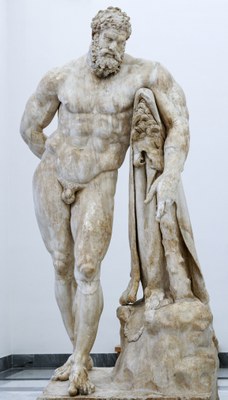Farnese Hercules
by
—
last modified
2024-03-07T17:31:57+02:00
Wikimedia Commons, Creative Commons Attribution 2.5 Generic (CC BY 2.5)
Contributors: photographer: Marie-Lan Nguyen
Wikimedia Commons, Creative Commons Attribution 2.5 Generic (CC BY 2.5)
Farnese Hercules, marble, 3.17 m, artist: Glycon (inscribed), Museo Archaeologico Nazionale, Napels; photographer: Marie-Lan Nguyen; source: Wikimedia Commons, https://commons.wikimedia.org/wiki/File:Herakles_Farnese_MAN_Napoli_Inv6001_n01.jpg, Creative Commons Attribution 2.5 Generic (CC BY 2.5), https://creativecommons.org/licenses/by/2.5/deed.en.


 Creative Commons Attribution 2.5 Generic (CC BY 2.5),
Creative Commons Attribution 2.5 Generic (CC BY 2.5),